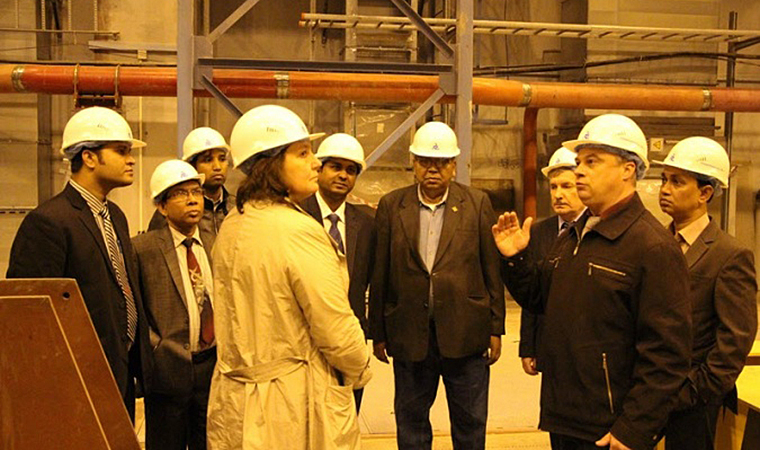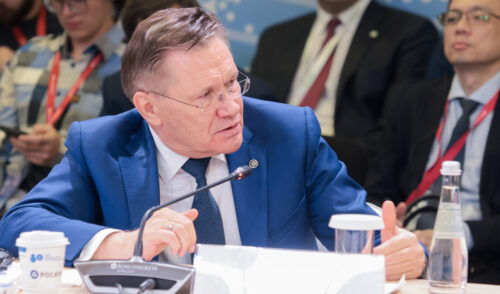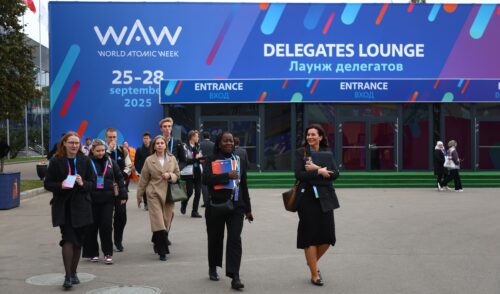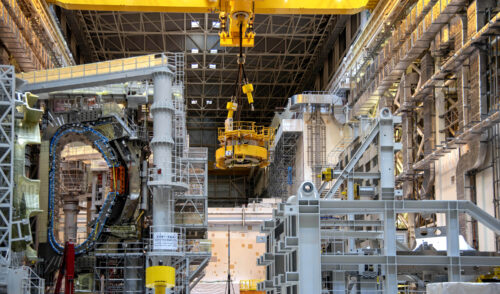
Visiting the nuclear station
back to contentsRepresentatives of Jordan’s and Bangladesh’s Atomic Energy Commissions visited Leningrad NPP-2, which will replace Leningrad NPP.
“We visit Russian nuclear facilities as part of our scientific and technical cooperation,” said Monzurul Haque, a representative of the Bangladesh Atomic Energy Commission. “Leningrad NPP-2 is interesting for us as a potential prototype for the nuclear station in Ruppur. Our delegation consists of two groups – the first group is engaged in procurement and selection of subcontractors to take part in the construction. The second group is responsible for overall planning and training of the staff. For this purpose, we have already been to Novovoronezh NPP-2 and ZiO-Podolsk engineering company, and now want to examine the design of Leningrad NPP-2. It is important to perform comprehensive analysis of what is suitable for Bangladesh with its extreme population density and scarce natural resources. First of all, we are interested in cheap electricity. Access to a cheap and reliable power source is a key to the national economic development.”
During the meeting, the visitors were provided with technical information about nuclear units under construction, approaches to the installation of core equipment, key events of the last year and tasks for the current year. The visit finished on the Leningrad NPP-2 construction site where the atomic commission members from Bangladesh and Jordan inspected the turbine house and reactor building. They were interested in safety systems, differences between VVER-1200 and VVER-TOI reactors, and operating principles of cooling towers.
In their turn, the guests spoke about the site for Ruppur NPP to be built by Russia. The site is now being prepared, with over 60 experts overseeing the process. The NPP site is located on the eastern bank of the Ganges River in the village of Ruppur, about 160 kilometers from Bangladesh’s capital Dhakka. The power plant will have two VVER-1000 units. The first unit is scheduled for the startup in the early 2020s.
A partner in engineering
Mr. G. K. Pillai, Chief Executive Officer, and Mr. N. M. Nadaf, President of the Technology Center at Walchandnagar Industries Ltd., India’s major producing equipment for the heating and nuclear power industries, visited ZiO-Podolsk (a subsidiary of Atomenergomash, Rosatom’s nuclear engineering division). The meeting with Anatoly Rubtsov, ZiO-Podolsk Chief Engineer, was dedicated to joint engineering projects.
The visit of the Indian delegation is not accidental. ZiO-Podolsk has gained reputation as a reliable supplier of heat exchangers for nuclear power plants. In the early 2000s, it supplied a complete set of heat exchange equipment for the first two units of Kudankulam NPP. “ZiO-Podolsk is a reputable partner with a distinct competitive edge,” stressed Mr. Pillai, Walchandnagar CEO. “I am sure that ZiO-Podolsk and Atomenergomash will help us with the construction of new units.”
In December 2014, Russia and India signed a series of documents providing for a broader cooperation in the nuclear field. According to the documents, Russia might construct 12 other units in the next 20 years. On the back of this initiative, India is seeking opportunities to set up production of the Russian power equipment in India.
Open for the public
120 journalists from foreign TV channels and printed media visited a nuclear plant construction site. Rosenergoatom organized a press tour to Novovoronezh NPP. Journalists also visited an operating nuclear station and had a look at simulators of in-core monitoring systems, external power systems and main control rooms.
“This is my first visit to a nuclear power station. I am sure that our footage will be extremely informative for the Slovakian audience as they are very much interested in the nuclear field,” said Jan Maloch, Editor of Markiza TV Channel.
“It was exciting to learn how a nuclear cluster functions and how work goes on at the nuclear station that will act as a reference for the nuclear power plant in Paks. Speaking to employees, I received very interesting information about control processes at the nuclear station. I am sure it will be useful in my future work,” said Csaba Poor from the Hungarian daily Népszabadság.
Raising awareness
South Korea’s delegation visited the Nuclear Power Information Center in Saint Petersburg to share experiences as part of the Atomexpo 2015 International Forum.
Among the delegates were KONEPA Chairman Ho-Sung Kim and Jong-Su Pak from KONEPA International Cooperation Department who studied the Center’s activities, projects and community engagement.
“Such centers make a great contribution to raising nuclear awareness. The project is excellent, and we would like to open a nuclear power information center in South Korea,” Ho-Sung Kim said.
In 2011, Rosatom and KONEPA (Korean Nuclear Energy Promotion Agency) signed a memorandum of understanding on shaping favorable public opinion about nuclear energy. The nuclear industry accounts for 35% of all electric power produced in South Korea, with 55% expected by 2030.




